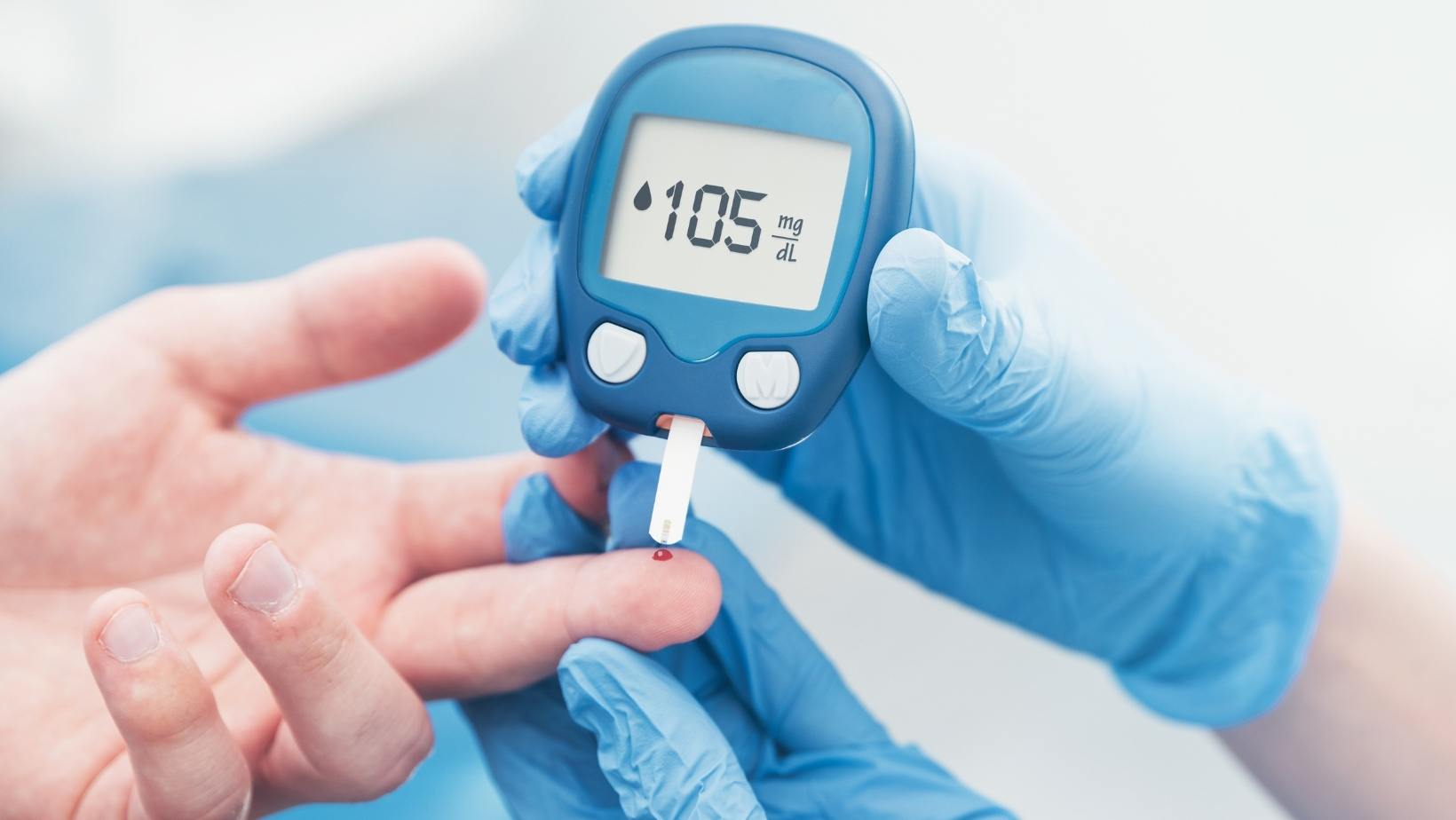
Introduction
Type 1 Diabetes is a multifaceted condition with a myriad of symptoms that can manifest differently in every individual. This comprehensive guide aims to shed light on the diverse symptoms of Type 1 Diabetes, from thyroid-related issues to the onset symptoms, providing a holistic understanding and aiding in early diagnosis and effective management.
Type 1 Diabetes and Thyroid Symptoms
Exploring the Connection:
Type 1 Diabetes often intertwines with thyroid symptoms, especially in women. The autoimmune nature of Type 1 Diabetes makes individuals more susceptible to thyroid disorders, leading to symptoms like unexplained weight gain, fatigue, and cold sensitivity.
Key Takeaways:
- Understand the overlap between Type 1 Diabetes and thyroid symptoms.
- Recognize the signs, especially in women, for timely intervention.
Onset Symptoms of Type 1 Diabetes
Early Warning Signs:
The onset of Type 1 Diabetes is marked by distinct symptoms such as excessive thirst, frequent urination, and sudden weight loss. Early recognition of these signs is crucial for prompt diagnosis and management, mitigating the risk of complications.
Key Takeaways:
- Be vigilant about the early signs for immediate medical consultation.
- Understand the importance of early diagnosis in preventing further health issues.
Navigating Fatigue in Type 1 Diabetes
Understanding the Exhaustion:
Fatigue is a common yet overlooked symptom of Type 1 Diabetes. It’s essential to differentiate normal tiredness from diabetes-related fatigue for appropriate management and treatment.
Key Takeaways:
- Learn to identify and manage diabetes-induced fatigue effectively.
- Explore strategies for energy conservation and revitalization.
Acid Reflux and Type 1 Diabetes
Managing Gastrointestinal Discomfort:
Individuals with Type 1 Diabetes may experience acid reflux, leading to discomfort and potential complications. Effective management involves dietary modifications, medications, and lifestyle adjustments.
Key Takeaways:
- Understand the link between acid reflux and Type 1 Diabetes.
- Implement dietary and lifestyle changes for relief and prevention.
Unveiling Symptoms in Different Demographics
Teens and Type 1 Diabetes:
Teenagers face unique challenges with symptoms like unexpected weight loss, mood swings, and headaches. Awareness and understanding of these symptoms ensure effective management and support for adolescents navigating Type 1 Diabetes.
Adult Onset Type 1 Diabetes:
Late onset Type 1 Diabetes in adults presents with symptoms that may be mistaken for Type 2 Diabetes, making accurate diagnosis essential for appropriate management.
Key Takeaways:
- Recognize the diverse symptom presentation in different age groups.
- Ensure accurate diagnosis for tailored management strategies.
Deciphering Headache and Fever in Type 1 Diabetes
Beyond Normal Headaches:
Type 1 Diabetes can cause persistent headaches, a symptom often underestimated. Understanding the connection helps in adopting effective headache management strategies, enhancing the quality of life.
Fever: A Red Flag:
Fever in individuals with Type 1 Diabetes may indicate underlying infections or other complications, necessitating immediate medical attention.
Key Takeaways:
- Understand the implications of headaches and fever in Type 1 Diabetes.
- Prioritize immediate medical attention to prevent complications.
Conclusion
This guide serves as a comprehensive resource for understanding the extensive symptoms associated with Type 1 Diabetes. From thyroid symptoms to the early onset signs, each section provides in-depth insights, aiding in the recognition, management, and alleviation of symptoms, ensuring optimal health and well-being for individuals with Type 1 Diabetes. Stay informed, stay vigilant, and ensure a proactive approach to managing Type 1 Diabetes effectively.
FAQs
- What is the connection between Type 1 Diabetes and thyroid symptoms?
- Explore the intricate relationship between Type 1 Diabetes and thyroid symptoms, especially in women, and understand the implications of concurrent thyroid disorders for effective management and symptom alleviation.
- How can I recognize the early onset symptoms of Type 1 Diabetes?
- Be vigilant about signs like excessive thirst, frequent urination, and sudden weight loss for immediate medical consultation and timely intervention.
- Is fatigue common in individuals with Type 1 Diabetes?
- Yes, fatigue is a prevalent symptom. Learn to identify and manage diabetes-induced fatigue effectively to enhance overall well-being.
- How does acid reflux relate to Type 1 Diabetes?
- Understand the link between acid reflux and Type 1 Diabetes and implement dietary and lifestyle changes for relief and prevention.
- What are the unique symptoms of Type 1 Diabetes in teenagers?
- Teenagers may experience unexpected weight loss, mood swings, and headaches. Awareness and understanding ensure effective management and support for adolescents navigating Type 1 Diabetes.
- Can adults have a late onset of Type 1 Diabetes?
- Absolutely, and it’s essential to recognize the symptoms for an accurate diagnosis and appropriate management in adults.
- Are headaches and fever significant symptoms in Type 1 Diabetes?
- Persistent headaches and fever may indicate underlying complications in Type 1 Diabetes, necessitating immediate medical attention.
- What are the symptoms of hyperglycemia in Type 1 Diabetes?
- Symptoms include frequent urination, increased thirst, blurred vision, and fatigue. Early recognition and management are crucial to prevent further complications.
- Can Type 1 Diabetes cause gastrointestinal issues like acid reflux and stomach aches?
- Yes, manage gastrointestinal discomfort by understanding the connection and adopting effective dietary and lifestyle modifications.
- How can I effectively manage fatigue related to Type 1 Diabetes?
- Explore strategies for energy conservation, revitalization, and appropriate medical interventions for effective fatigue management.
- Are mood swings and emotional changes related to Type 1 Diabetes?
- Understand the impact of Type 1 Diabetes on emotional well-being and explore supportive strategies for mood stabilization.
- What are the symptoms of Type 1 Diabetes in infants?
- Be aware of signs like excessive thirst, frequent urination, and unexplained weight loss in infants for early diagnosis and management.
- Can Type 1 Diabetes cause skin issues like rashes?
- Yes, learn about the skin manifestations, including rashes, and adopt effective skincare routines for prevention and management.
- How is vomiting related to Type 1 Diabetes?
- Understand the causes of vomiting in Type 1 Diabetes and ensure immediate medical consultation for management and relief.
- Is it possible to have both headaches and Type 1 Diabetes?
- Explore the connection between persistent headaches and Type 1 Diabetes for effective headache management and enhanced quality of life.
- What are the clinical manifestations of Type 1 Diabetes?
- Delve into the diverse clinical manifestations, including hypoglycemia and hyperglycemia, for comprehensive understanding and management.
- How can I diagnose Type 1 Diabetes?
- Understand the diagnostic criteria, tests, and procedures for an accurate diagnosis of Type 1 Diabetes.
- Are there any specific symptoms of Type 1 Diabetes in men?
- Recognize the symptoms in men for tailored management strategies and effective symptom alleviation.
- Can Type 1 Diabetes cause low blood sugar symptoms?
- Yes, be aware of the signs of low blood sugar for immediate intervention and management in individuals with Type 1 Diabetes.
- What is the treatment for fatigue in Type 1 Diabetes?
- Explore various treatment options, including lifestyle adjustments and medical interventions, for effective management of diabetes-induced fatigue.
Blog Tags
Type 1 Diabetes, Thyroid Symptoms, Onset Symptoms, Diabetes Fatigue, Acid Reflux, Teenagers Diabetes Symptoms, Adult Onset Type 1 Diabetes, Diabetes Headaches, Fever in Diabetes, Hyperglycemia Symptoms, Diabetes in Infants, Diabetes and Vomiting, Diabetes Skin Issues, Clinical Manifestations, Diabetes Diagnosis, Diabetes in Men, Low Blood Sugar Symptoms, Diabetes Treatment











